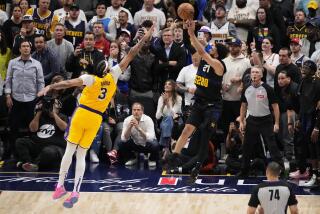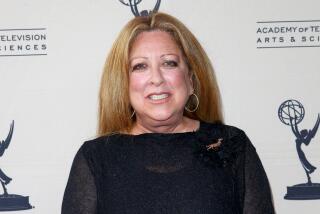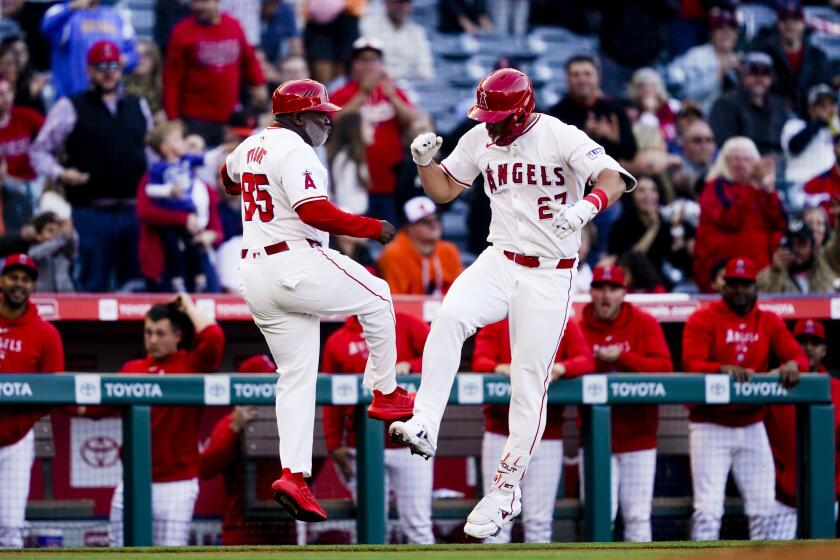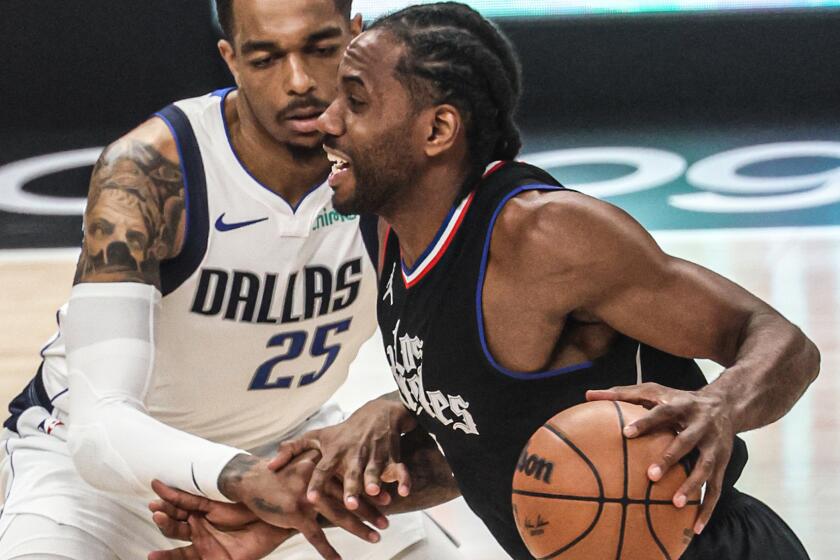LeBron James and his band of brothers
In 2002, LeBron James first appeared on the cover of Sports Illustrated, which dubbed him “The Chosen One.” He was compared to Michael Jordan and Magic Johnson.
Talk about hype: James was all of 17 and a junior in high school.
Now 24, James is the NBA’s reigning MVP and the best hoops player on the planet not named Kobe Bryant. Today, he views that SI cover as a symbol of the outsized celebrity he attained at a young age.
“Now that I look back on it, I’m like, ‘wow, that was huge,’ ” he says. “We were one of the first [high-school teams] to start it all up, doing nationally televised games, traveling the U.S., taking planes to big tournaments.”
James is speaking on the phone from Cleveland while on a full-court-press promotion tour. He’s simultaneously publicizing his first book, “Shooting Stars” (co-written by Buzz Bissinger, author of “Friday Night Lights”), and hyping a related documentary that he executive produced (“More Than a Game,” which premiered at the 2008 Toronto International Film Festival, opens on Oct. 2).
The memoir and the movie are calculated to boost James’ crossover marketability, highlighting his “brand” of on-court brilliance and off-court accessibility. Both projects are dear to James because they focus on his hardscrabble youth and the enduring bonds he developed with four boyhood friends: Sian Cotton, Dru Joyce III, Willie McGee and Romeo Travis.
“I’ve been through a lot in my life,” James says. “I’ve overcome adversity and a lot of things to become who I am today. They’re part of the reason for where I am today.”
--
Disrupted childhood
As the only child of a single mother who gave birth when she was 16, James grew up in Akron, Ohio, without knowing his biological father. He and his mom, Gloria, moved 12 times between the time he was 5 and 8. “I just grabbed my little backpack, which held all the possessions I needed, and said to myself what I always said to myself: ‘It’s time to roll,’ ” James writes.
When LeBron was in the fifth grade, Gloria agreed to let him to live with a local family. James describes the experience as “good karma” because he found stability and a surrogate family in the home of Frankie and Pam Walker.
Meanwhile, even as James was showing immense skill in basketball and football, he and the other members of the self-proclaimed “Fab Four” (Travis had not yet joined the group) were becoming inseparable. “We shared everything with each other,” James writes. “[P]izza, Starbursts, the thin sticks of Twizzlers, it didn’t matter.”
Their success on the Shooting Stars youth team (coached by Dru Joyce’s father) captivated the basketball fans of Akron, the once-thriving “Rubber City” that had fallen on hard times. Most people assumed that the Fab Four would attend Buchtel High, a predominantly African American public school. Instead, they opted for St. Vincent-St. Mary, a Catholic private school that is primarily white, in large part because Little Dru, as James calls him, wasn’t going to make varsity at Buchtel.
The black community’s anger about the decision, James recalls, “didn’t surprise me. It was typical. We knew that we were going to get backlash for not going to Buchtel, and we were ready to accept that.”
With Travis on board, the Fab Five won three Ohio championships, as well as a No. 1 national ranking in James’ senior year. And they continued to stir considerable controversy because of the myriad attempts to cash in on James’ stardom.
The school moved its home games to the University of Akron arena to sell more tickets. They played a national schedule that included a matchup against Orange County powerhouse Mater Dei at Pauley Pavilion. ESPN2 televised the game live. Later, James’ mother took out a $50,000 loan to purchase LeBron a Hummer for his 18th birthday.
For these and other transgressions, James and his buddies were pilloried by media, parents and peers. They retreated and developed their own mantra: “We all we got.”
Today, James admits that the travel was “excessive.” He also concedes that he didn’t always handle stardom well. He smoked marijuana and partied hard on the eve of a crucial game. “It was something I tried,” he says. “Our junior year we were doing some things we shouldn’t have been doing.”
What happened next was what he calls “bad karma.” Says James: “We didn’t respect the game of basketball. When we got to the last game of the season, the championship, we got beat.”
The Fab Five learned their lesson. In their senior year, James says, “we rededicated ourselves to the game, we approached the game the right way, and good karma came back to us.”
Bissinger believes the criticism the teens faced was often unfair. “They did some things they shouldn’t have, but these were kids,” he says. “However mature they were, they were still high school kids. What I admire about LeBron and the other members of the Fab Five is they stuck together. They did not go off the deep end.”
--
Mum’s the word
James steers “Shooting Stars” away from other incidents during this time. He doesn’t mention Savannah Brinson, his longtime girlfriend and mother of his two children, except in the acknowledgments. There’s little discussion of his decision not to attend college and instead jump to the NBA; there’s scant analysis of the convoluted Nike-Adidas machinations that resulted in James’ $90-million deal with the Swoosh before he had dribbled an NBA basketball.
Perhaps these topics are too heavy for this book, which James says is “geared toward inner-city kids that have a dream and don’t really believe there’s a way out. I was one of those kids who didn’t care about what other people said your life should be like. I made it my way.”
The story, Bissinger says, is “almost like the flip side of ‘Friday Night Lights,’ where I saw the destructive role that sports can play on kids. Here, sports played a very constructive role. It taught them about teamwork and what happens when you become arrogant. Ultimately, it taught them about what happens when you come together and commit yourself.”
“What I can say to parents is, don’t take your kid’s childhood away,” James says. “If he’s an aspiring athlete or a phenom, let him continue to be with his friends and have fun.”
With his sublime talent, the 6-foot-8-inch James has certainly enjoyed himself in his six seasons as a pro. In 2007, he led the Cleveland Cavaliers to the NBA Finals. Then he helped the U.S. win gold at the 2008 Beijing Olympics. His endorsements make him one of the highest-paid athletes in the world.
His resume still lacks the ultimate validation: an NBA championship. In the off-season, amid rumblings that James will leave Cleveland after the 2009-10 campaign, the Cavs traded for former Lakers center Shaquille O’Neal. If Shaq can help LeBron win the title, the thinking goes, then maybe James will stay. Whether LeBron and Shaq can do it will be among the most-watched story lines of the upcoming NBA campaign. So, too, will be James’ next move.
Having delved into his past, James declines to forecast his future. “That’s what you writers do, you make the predictions,” he laughs. “I just play the game.”
--
More to Read
Get our high school sports newsletter
Prep Rally is devoted to the SoCal high school sports experience, bringing you scores, stories and a behind-the-scenes look at what makes prep sports so popular.
You may occasionally receive promotional content from the Los Angeles Times.






